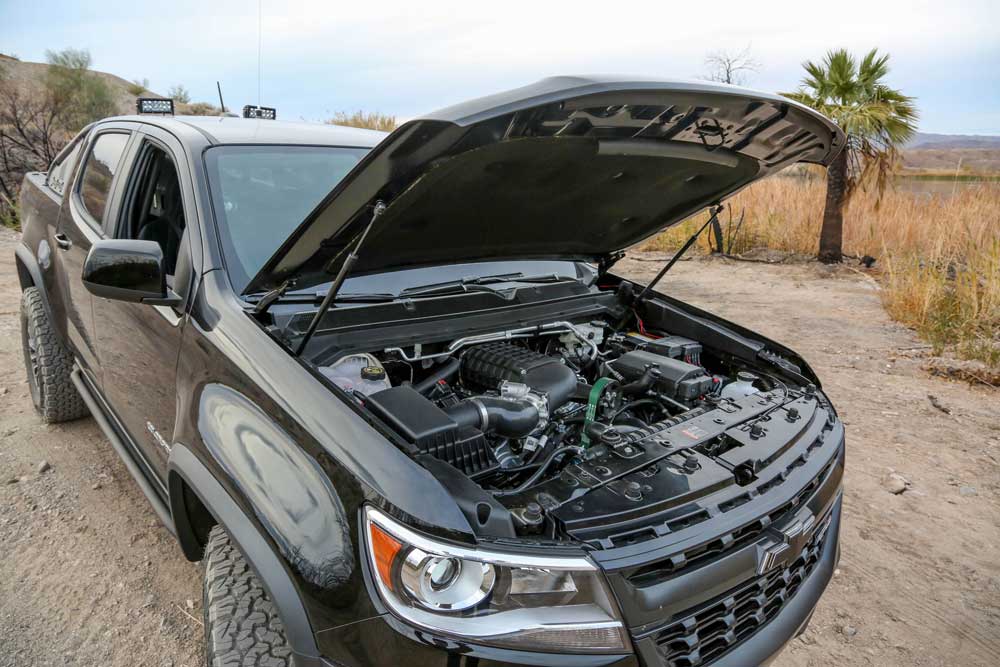We get a lot of questions about what makes our supercharger different from the other kits available on the market.
We get questions about our components: why do you use the 1900 TVS blower instead of the 1740 like other manufacturers?
We get questions about horsepower: why are horsepower claims by manufacturers so inconsistent? Some of them seem excessively high.
We have answers.
It’s ill advised to choose a supercharger based solely on manufacturer horsepower claims. Many manufacturers give you the inflated horsepower number at the crank. This number is significantly larger than the actual usable horsepower at the rear wheels due to an approximate 20% parasitic loss of power from crank to wheels.
In addition, dyno horsepower results are a good tool, but they are not an absolute truth. There is a lot of variation in results depending on the type of dyno, altitude, air temp barometric pressure, etc.
Additionally, these numbers can be manipulated, you can get one very high dyno pull and use that number for marketing to sell kits that wouldn’t be representative of the result you would get driving, nor would it be sustainable.
So, your best bet in choosing a supercharger is to learn as much as possible about the components of the kit, then make your own educated conclusions.
The first very important component is the blower itself.
The Mallett Supercharger has a TVS 1900. We chose it because you get much cooler air and higher efficiency with the 1900 vs the much smaller 1740.
More volume of cooler air equals more power at cooler temps with less boost. This is especially important when under sustained load such as towing or at high altitudes.
Other kits have chosen the 1740 blower. If you spin the 1740 faster to flow the same amount of air, it will have significantly more heat. More heat equals less power and more risk to engine longevity.
Next take a look at the belt drive.
Our kit has a completely separate belt drive and consists of a CNC pulley, idler mounts, the best idlers and tensioners in GM’s inventory. We use an 8-rib Gates belt – the best belt Gates makes.
These are the same components we use on our high performance builds up to 1000 horsepower and the belts never fail. These things are totally bulletproof.
You will see that other kits put a longer belt and an idler on the stock accessory drive. It is considerably less expensive, but the 5 rib belt can slip, squeal, burn up and sling off. In addition to the supercharger, the 5 rib belt is also driving the alternator and the compressor with the same little tensioner.
Next check out the intercooler system.
We designed our own heat exchanger and intercooler brick and have them custom made by Fluidyne out of the best materials available so they are as efficient as possible.
We also added a 2+gallon water tank to increase the system capacity.
Other kits have a significantly smaller, less expensive water tank and intercooler system.
So no matter what any manufacturer of a supercharger claims, if you take a close look at the parts involved, it’s clear that a compromise in the blower, the belt and the cooling system makes it impossible to match the power our kit produces.
A kit can be made much cheaper and offered at a lower price with these compromises. While there’s nothing wrong with a lower performing, lower priced kit, that’s not how we do any project at Mallett Performance Cars. Our kits are made for superior performance, reliability, and longevity.
The earliest kits we installed back in 2016 have now passed the 100,000 mile mark and are still going strong.
We are passionate about our products and committed to excellence in the design, function, and performance of our kits. We support and stand behind our products and give our customers first class customer service.
The Stage 2 Mallett Supercharger plus Mallett Exhaust gets you 130+ rear wheel low-end power over stock.




